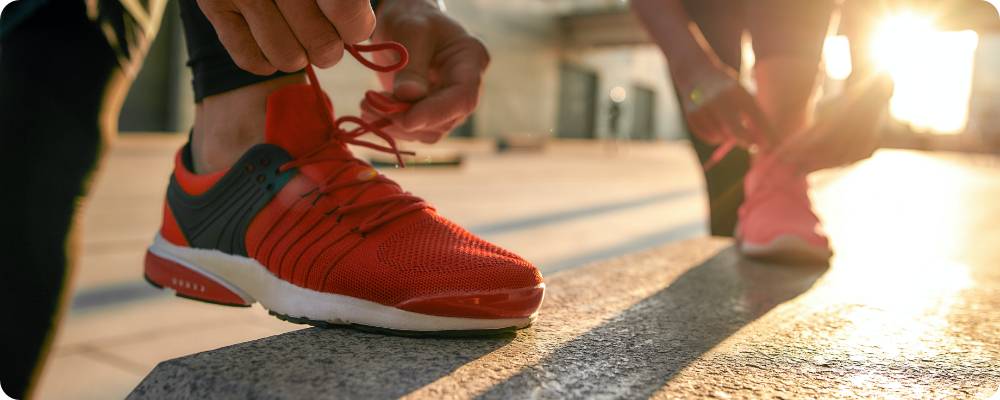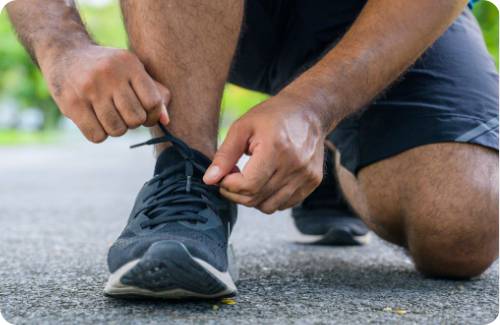Are cushioned shoes good or bad?
Having the correct shoes can significantly impact your running performance. While a lot of runners seek out comfortable shoes, cushioning serves a purpose beyond providing a comfortable feel.
Effective cushioning in running shoes is essential not just for increasing comfort, but also for preventing injuries and enhancing performance. It soaks up the impact of each step, safeguarding your joints and muscles from the harsh effects of repetitive strain.
Yet, an excess or deficiency of padding may result in issues, emphasizing the importance of discovering the right equilibrium for your individual running style and requirements.
This article explores the intricate impact of cushioning on your running, and offers advice on how to optimize your footwear for safety and performance.
1.Optimal Cushioning in Running Shoes: Not Just a Comfort Feature
Cushioning in shoes is not just about comfort; it plays a crucial role in absorbing shock impacts. The foams integrated within the midsole shield your feet from the unevenness of the terrain.
However, the suitability of a running shoe is highly individualized. It depends on factors such as your body type, your history with footwear, and any specific injuries or discomforts you might have experienced.
2.Natural Cushioning: The Barefoot Baseline
Running barefoot is arguably the most natural form of movement. This extreme example illustrates how our feet, along with our Achilles tendons, calves, leg muscles, and thighs, absorb shocks naturally, using the body’s own mechanics.
Our stance and gait naturally optimize cushioning. Almost all footwear provides some level of cushioning, which is essential even though we wear shoes nearly all the time.
3.Who Needs More Cushioning and Why?
Heavier runners typically need more robust cushioning. For runners over 75 kg and male runners over 85 kg, enhanced cushioning helps counteract the forces of gravity and weight, adding comfort especially during longer or more challenging runs.
That's why heavy runners must vigilent when they choose a pair of shoes.
4.Risks of Over-Cushioning
Excessive cushioning can lead to shoes that are too soft or too compressible, which may not adapt well to varying terrains and can cause instability. A very thick sole can diminish your feel for the ground, reducing responsiveness, which is particularly problematic in trail running.
Instability isn't only about weight; it can also result from the materials used in many modern running shoes, which are often too light and voluminous.
5.Finding the Right Balance
For optimal balance, a moderately thick sole without excessive technologies offers the best of both worlds. It allows the muscles and the foot to maintain contact with the ground, promoting natural body adaptations and movements.
Too much cushioning can delay toe-off, requiring your body to adjust to the forces more slowly. A well-calibrated cushioning system, ideally with a drop of less than 8 mm (or even 4 mm for more experienced runners), helps maintain a natural running motion and reduces the braking phase.
Conclusion
While cushioning is essential, it's all about getting the right amount. Too little can lead to discomfort and injury; too much can impede natural movement and cause stability issues. Strive to enhance your running style and strengthen your muscles, which not only prevents injuries but also conserves energy and reduces overall strain. Effective cushioning is crucial, but it's the precision in its application that truly enhances your running experience.
YOU MIGHT ALSO LIKE...
How to choose a pair of running shoes?
Running is an accessible, economical, and practical sport. You can run whenever and wherever you want: before or after work, during your lunch break, day or night, in the city or in the woods—all you have to do is put on your running shoes, and off you go.
Then there's the all-important question: How do I choose the right pair of shoes to start running?
What are good shoes for heavy runners?
Choosing the right pair of running shoes can improve your performance and reduce the risk of injury. To make your choice, you need to consider various criteria related to your running and personal characteristics.
Heavy runners should pay particular attention to this criterion when choosing their shoes. Indeed, these shoes need to have additional reinforcement and cushioning to minimize the impact on the runner's joints and tendons.
Running should be fun. To keep it that way, we've compiled 6 basic rules that show what's important for feeling good in sports and for optimal recovery/preparation.
To integrate running training into your routine, you should listen to your body, respect it, and start with a rhythm that is tailored to you.





